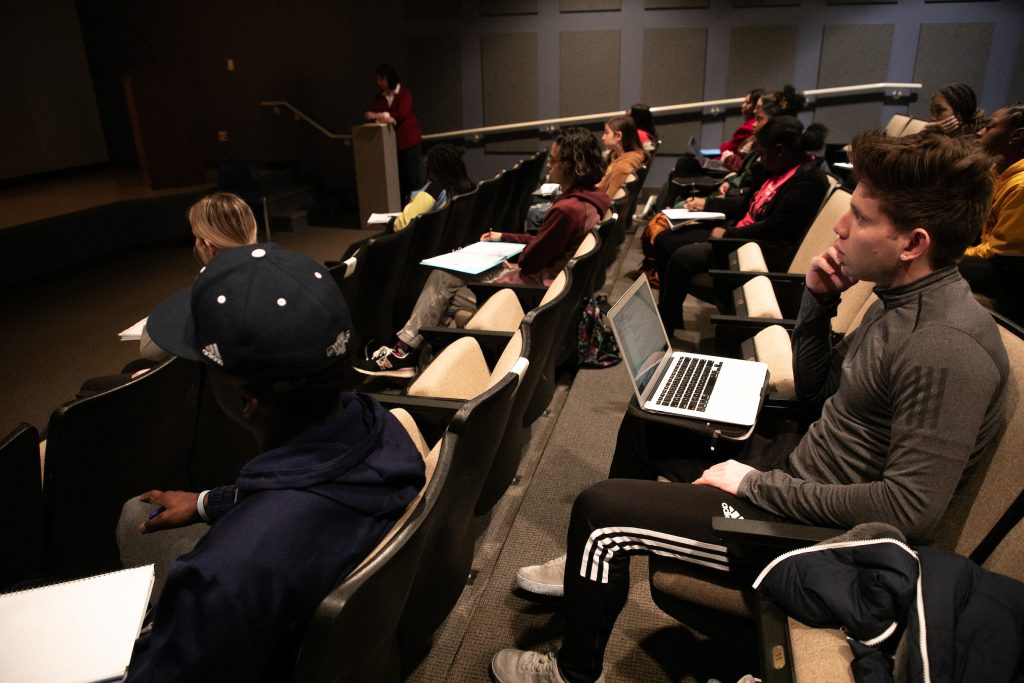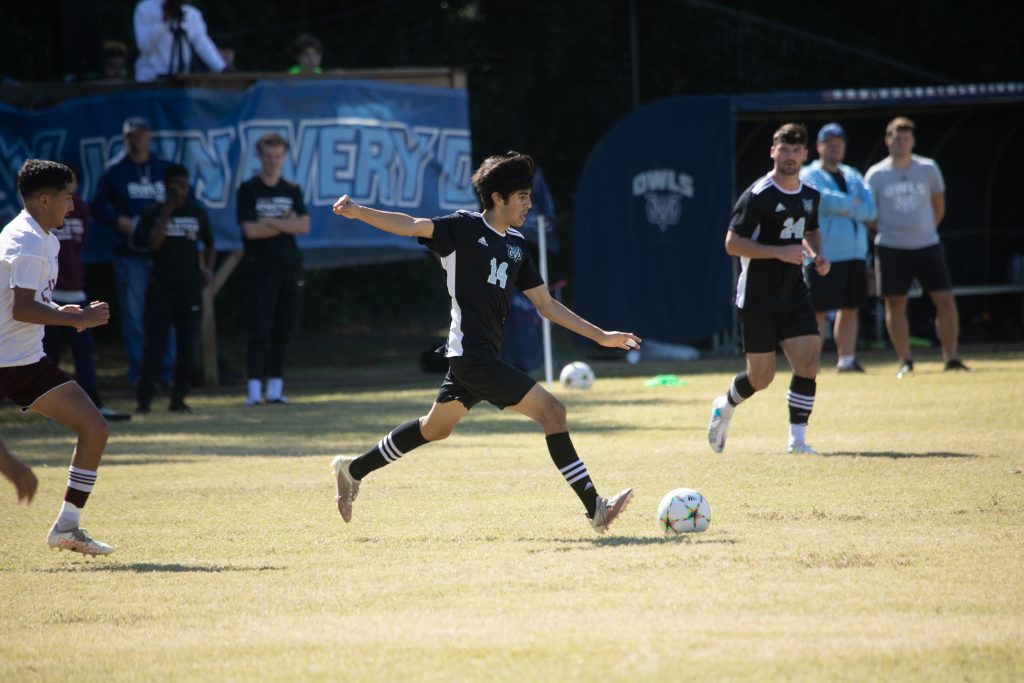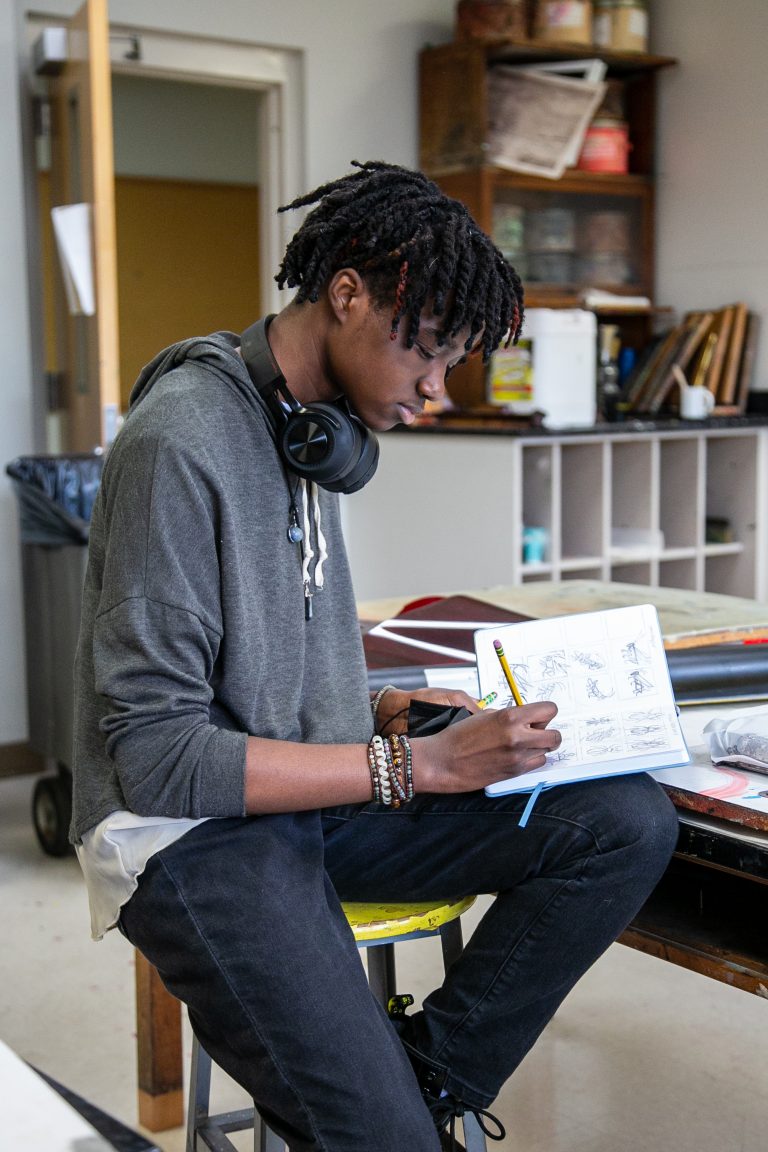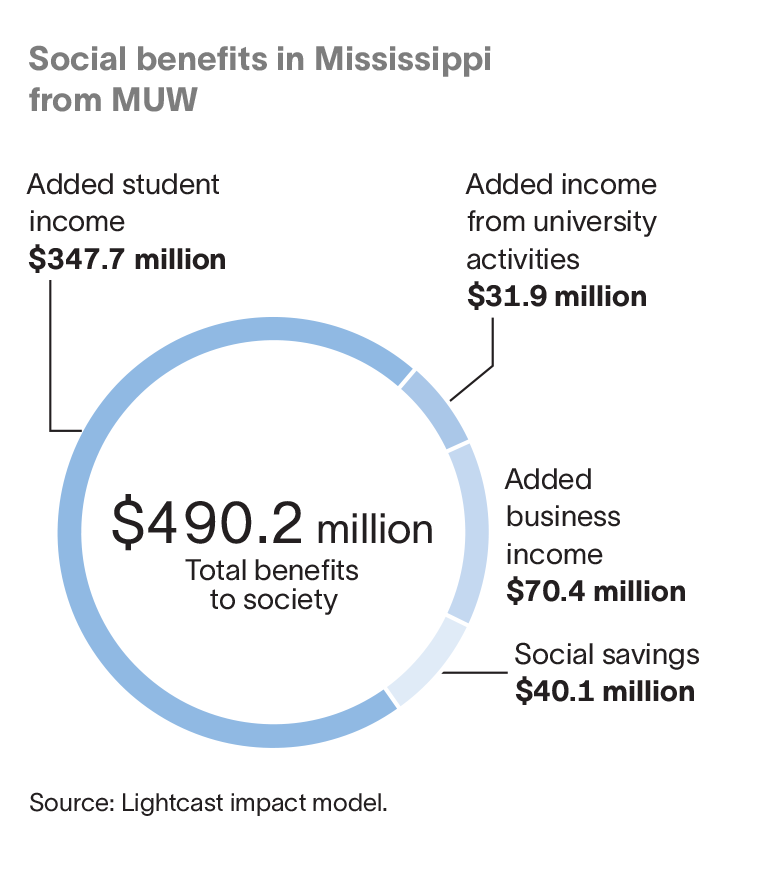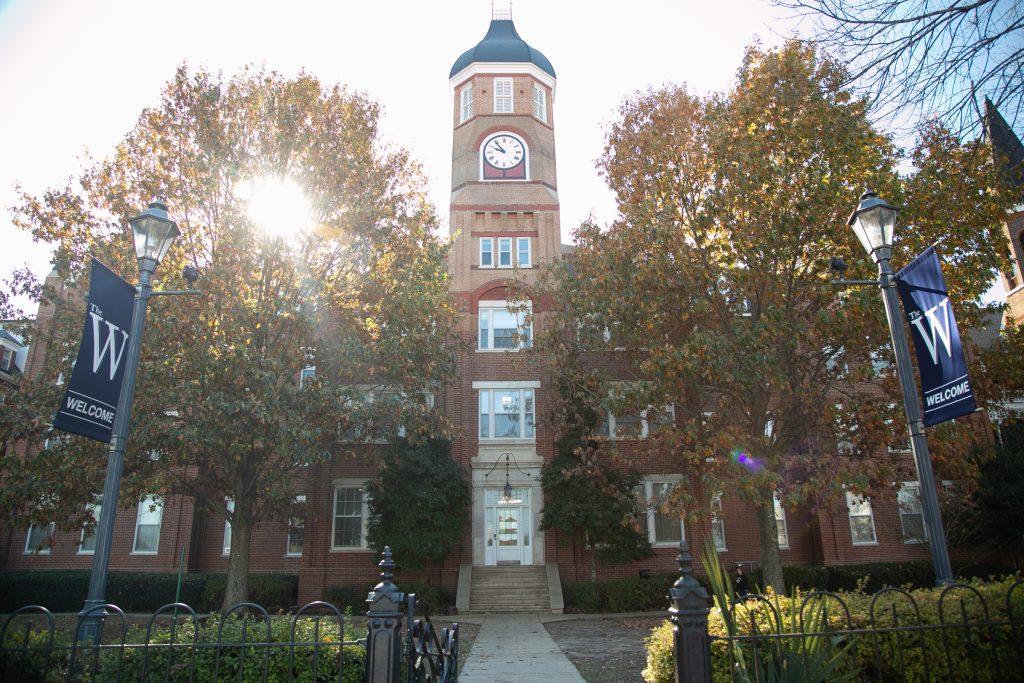Executive Summary
Download Executive Summary Download Fact Sheet
MISSISSIPPI UNIVERSITY FOR WOMEN (MUW) creates value in many
ways. The university plays a key role in helping students increase their employability
and achieve their individual potential. The university draws visitors and students
to the region, generating new dollars and opportunities for the Golden Triangle (plus
Monroe and Noxubee counties).1 MUW provides students with the education, training,
and skills they need to have fulfilling and prosperous careers. Its student volunteers support
the regional economy through the output and employment generated by regional
businesses and organizations. Furthermore, MUW is a place for students to meet new
people, increase their self-confidence, and promote their overall health and well-being.
MUW influences both the lives of its students and the regional economy. The university
supports a variety of industries in the Golden Triangle (plus Monroe and Noxubee
counties), serves regional businesses, and benefits society as a whole in Mississippi
from an expanded economy and improved quality of life. Additionally, the benefits
created by MUW extend to the state government through increased tax revenues
and public sector savings.
This study measures the economic impacts created by MUW on the business
community and the benefits the university generates in return for the
investments made by its key stakeholder groups—students, taxpayers,
and society. The following two analyses are presented:
Economic Impact Analysis Investment Analysis
All results reflect employee, student, and financial data, provided by the university, for
fiscal year (FY) 2021-22. Impacts on the Golden Triangle (plus Monroe and Noxubee
counties) economy are reported under the economic impact analysis and are measured
in terms of added income. The returns on investment to students, taxpayers, and
society in Mississippi are reported under the investment analysis.
1 For the purposes of this analysis, the Golden Triangle (plus Monroe and Noxubee) is comprised of the following counties
in Mississippi: Clay, Lowndes, Monroe, Noxubee, and Oktibbeha.
